November 24th, 2013 §
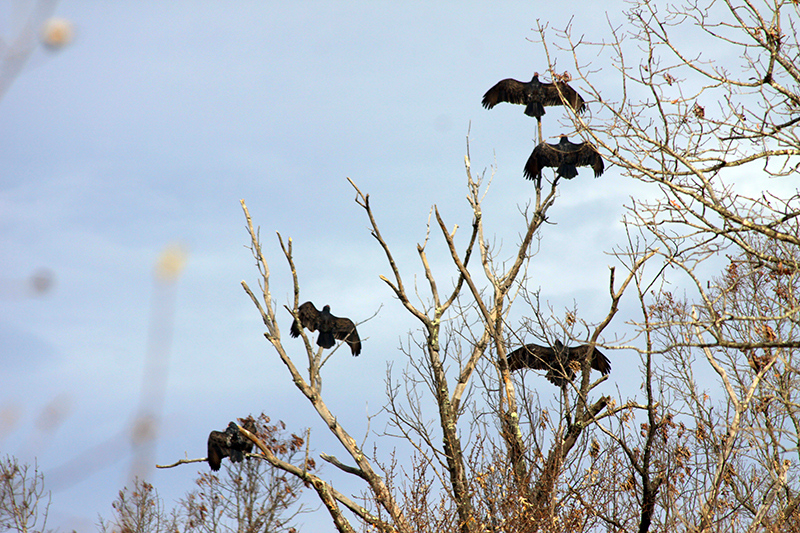
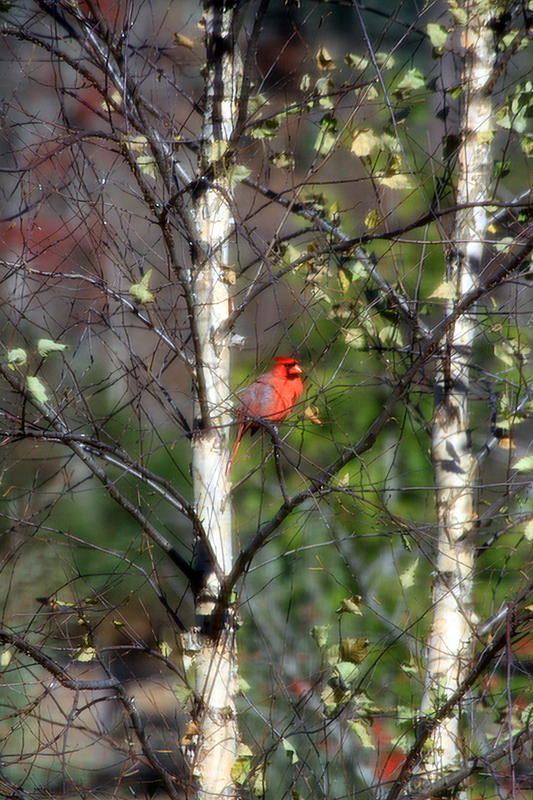

A friend and Tuck and I took a long hike up to Blue Hole and further up the mountain to Shenandoah National Park.

Tuck in one of the swimming holes along the North Fork of the Morman’s River. It hasn’t rained in a long time, and the water was low and crystal clear, the rivers easy to cross. This is the first and last time during the hike that Tuck got totally submerged. He figured out pretty fast that mountain streams in late November aren’t the same temperature as they are in summer!
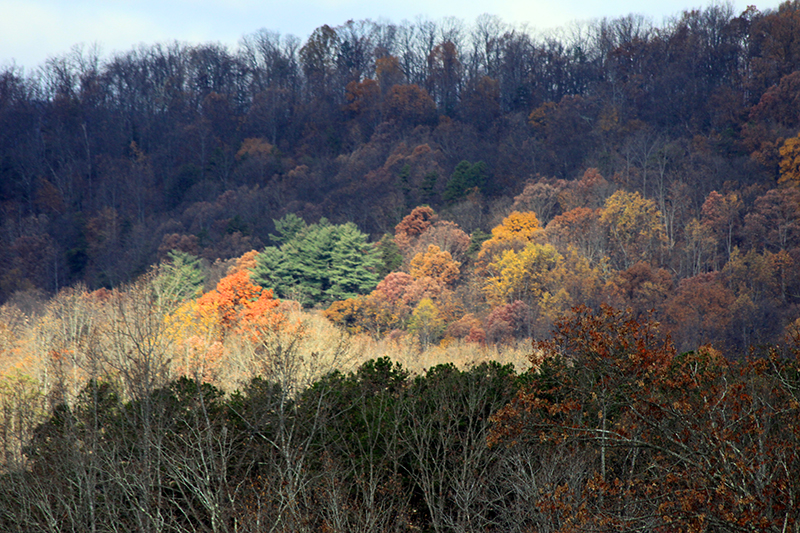
The last of the fall color. Just about all the leaves are down now, and it’s looking very wintery.

Blue Hole. This is where my friends and I did most of our swimming growing up. With the water snakes, timber rattlers, copperheads and ticks. Rural childhood. You can jump off those big rocks below and not hit the bottom of the hole.

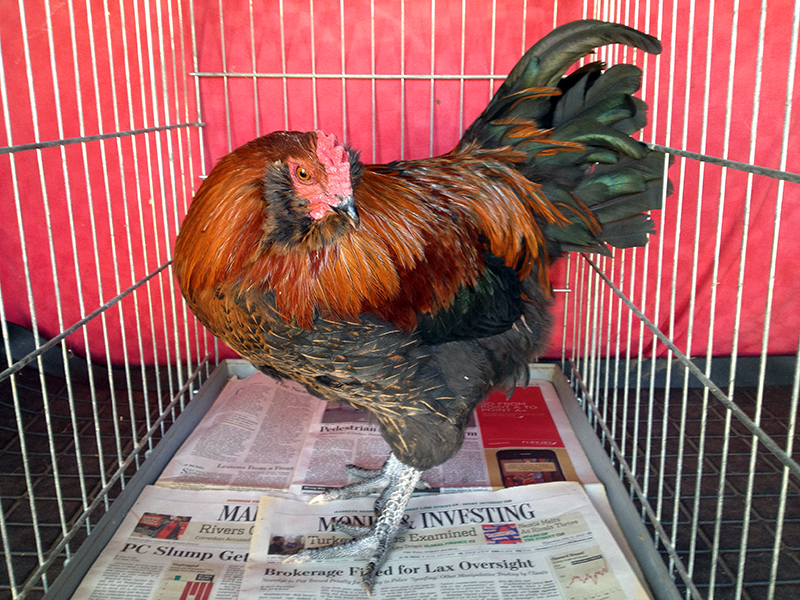
Yesterday I gave away one of the roosters that hatched this past summer. He’s turned into a handsome guy, but there’s no way I need three roosters in a small coop. This guy went home with a jolly lady and her young son—found via CraigsList—to rule over his own flock of hens. So he’s on to a better life, and I am happy about it. I knew he would be well-treated when his new owner asked what he prefers for treats! HA!

November 2nd, 2013 §
I had a very intense encounter with an insect today. I was cleaning up the front garden when I looked down and saw a bright green praying mantis at the base of the porch. It was clutching an identifiable insect, and I had obviously disturbed its head-first meal.
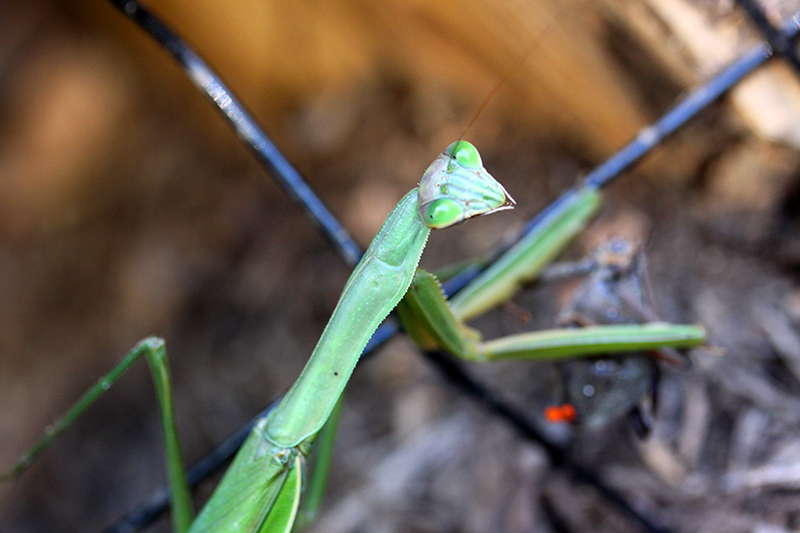
The mantis watched my every move, swiveling its triangle head to stare at me with all-seeing eyes. I’ve experienced this before with mantises, but this time the mantis began to move exactly like a mammal. It tucked its bug under its arm like a football and carried it deeper under the porch, eyes on me the entire time. I had the eerie sensation of watching a wolf drag a deer haunch deeper into a cave. This insect had caught a meal, and there was nothing I could do that would scare it from abandoning food.
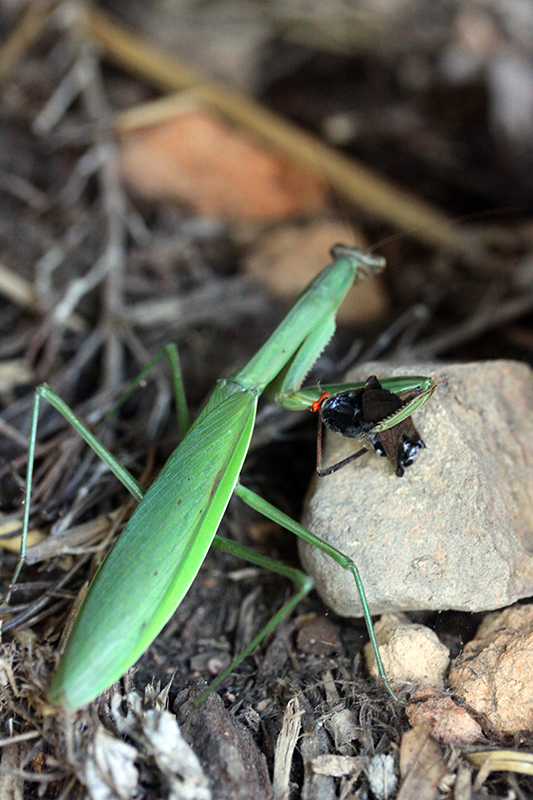
I am so used to being around easily frightened birds and insects and even large mammals, all of which usually drop whatever they’re doing in my presence, that the deliberateness with which this mantis protected its quarry while strategically repositioning was nothing short of astonishing. The intelligence of its deliberate movement gave me chills.
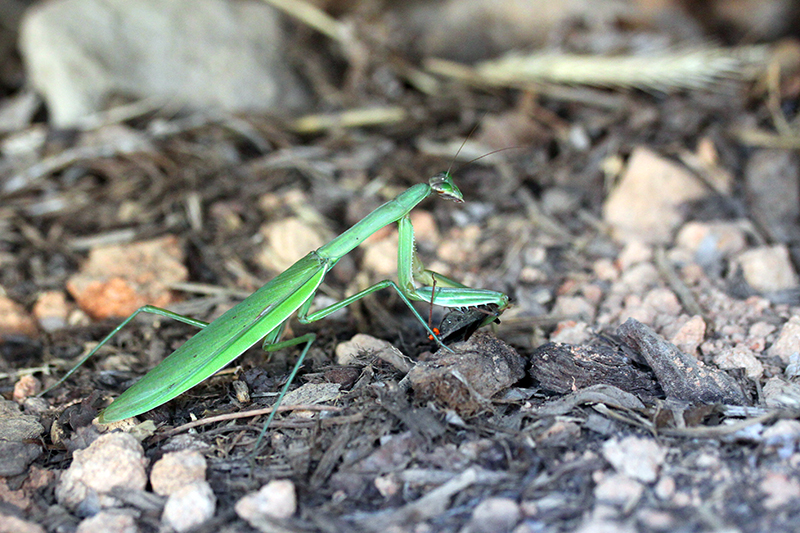
And I was happy to for it to go on its well-fed way. Praying mantises are treated as gods around here for the benefits they bestow upon the garden by eating all sorts of insect pests. I’ve gone so far as to clip mantis egg cases from shrubs in the about-to-be-bushogged field, only to relocate them to a safe place in the garden. And today, after seeing this mantis off, I found a mantis egg case in the mint patch by the garden. Every scraggly stem, but for the one that bore this egg case, was clipped and carted to the compost pile.
October 16th, 2013 §
I found this lone monarch feasting amongst the zinnas last week. Given all the trouble monarchs are in, I was very happy to see it and to know I’d done my part to cultivate a delicious banquet of nectar-rich flowers. I wonder if this butterfly was refueling on its migration to Mexico?
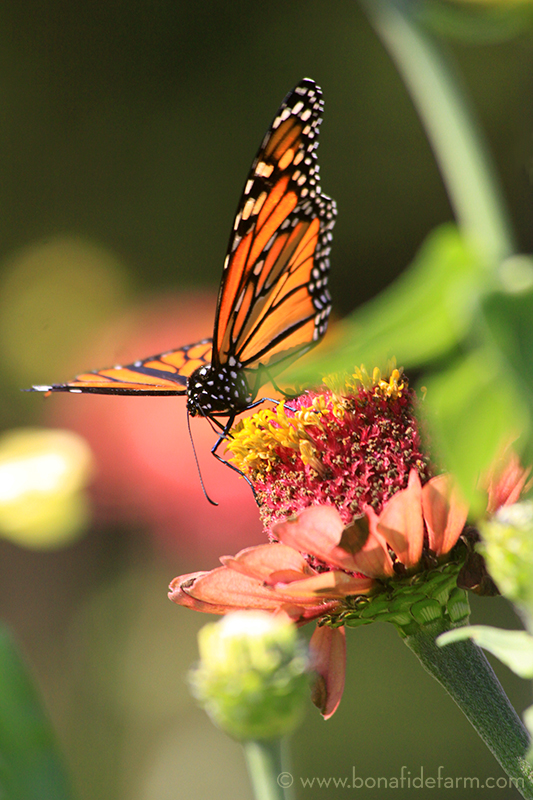
Monarch butterflies are decreasing at an alarming rate: 59% in the last year according to a survey carried out during the 2012-2013 winter season by the WWF-Telcel Alliance, and Mexico’s National Commission of Protected Areas (CONAP). The numbers of monarchs are at their lowest numbers in 20 years. According to the same organization:
The latest decrease in monarch butterflies is likely due to a decrease in the milkweed plant (Asclepias) – a primary food for monarchs – from herbicide use in the butterfly’s reproductive and feeding grounds in the US, as well as extreme climate variations during the fall and summer affecting butterfly reproduction.
Why should you care if monarch numbers are decreasing? Because monarchs, like all insects, are pollinators. In simplest terms, without pollinators we won’t have any of the foods that require pollination, no fruits or vegetables, and these are the healthiest foods we can eat. And even a food that doesn’t appear to be a vegetable, such as bread, starts life as a plant that probably needs to be pollinated.
So if we want to keep eating, we have to cultivate what pollinators need to thrive and eliminate the use of what’s killing them—pesticides and herbicides. In the case of the monarch, their most important food is milkweed. There are some native milkweeds in this area, and one of the reasons I don’t mow some of my fields is to let these “weeds” flower to feed the monarchs. Even so, these butterflies need more milkweed. It’s one of my goals to some day make a formal monarch garden, rich with milkweeds, to try to encourage monarchs to breed and cocoon right here.
If you’ve never seen a monarch cocoon in person, it’s worth planting a butterfly garden just for a chance to spy this treat. The cocoons are the most beautiful color of Jadeite green and are decorated with spots of pure, shining gold. They look like precious jewels. When the monarch is about to hatch, the cocoon turns translucent and you can see the orange and black butterfly folded up inside. When it emerges, it’s all wet, sticky and deflated, and it must sit and slowly pump its wings until its blood inflates them. Truly fascinating and beautiful to watch in person.
For even more on the monarchs, visit monarchwatch.org. And for a scientifically literary take on the monarchs’ plight, read Flight Behavior, by Barbara Kingsolver, one of my most favorite authors.
October 5th, 2013 §
This lovely fuzzy white caterpillar came in on a bunch of dahlias. I’m not 100% positive on the i.d. Correct me if I’m wrong.
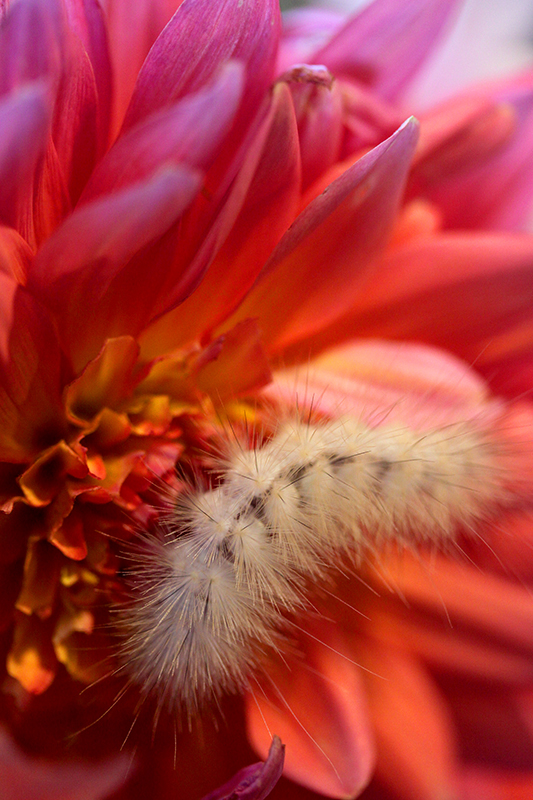
September 29th, 2013 §
Let’s celebrate with a bunch of bluebirds! There were about nine bluebirds hanging out around the birdbath the other night. I believe they are some of the babies that were born and raised right here. A total of 12 babies in three separate clutches made it to fledging this year, and I have definitely noticed an increase in the number of bluebirds around the farm in general since moving here. And that is definitely something worth celebrating on this four-year anniversary of starting the blog.
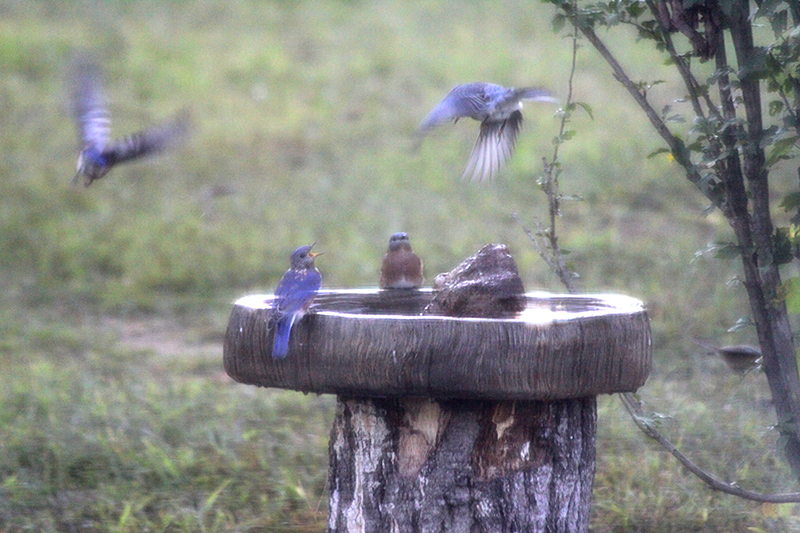
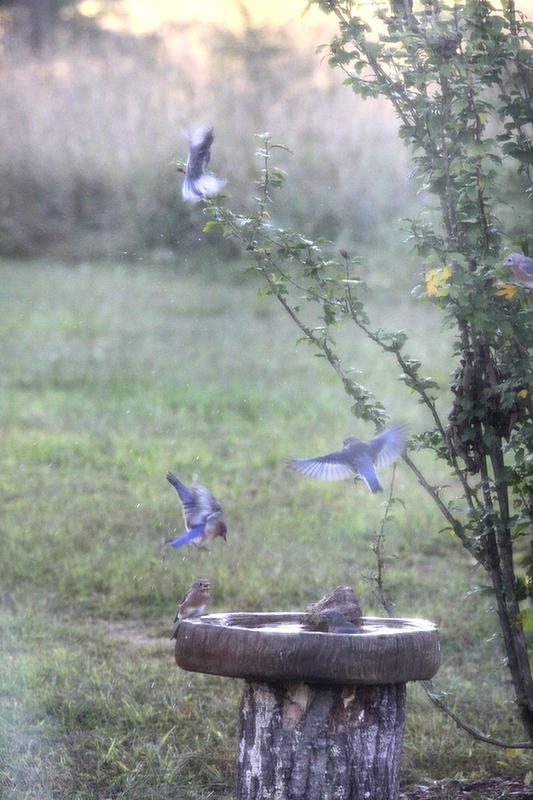
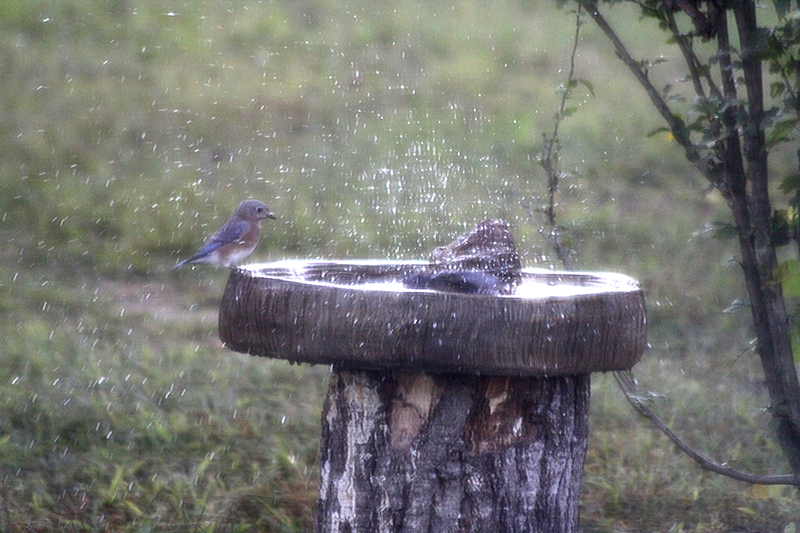
First anniversary, fresh off house construction:
http://bonafidefarm.com/2010/09/29/the-anniversaries-just-keep-coming/
No official second anniversary post because I was in the middle of planting a new forest: http://bonafidefarm.com/2011/09/30/this-weekends-project-the-big-dig/
Third anniversary, just back from the Mother Earth News Fair and starting to experiment with chickens in the garden:
http://bonafidefarm.com/2012/09/29/three-year-blogiversary/
http://bonafidefarm.com/2012/09/29/chickens-in-the-garden/
September 26th, 2013 §
Turned over a chewed-upon morning glory leaf the other night to discover pure gold. A pure gold beettle, that is, as shiny as metal and iridescent to boot. It was so pretty I could easily have mounted it on a band and worn it on my ring finger.
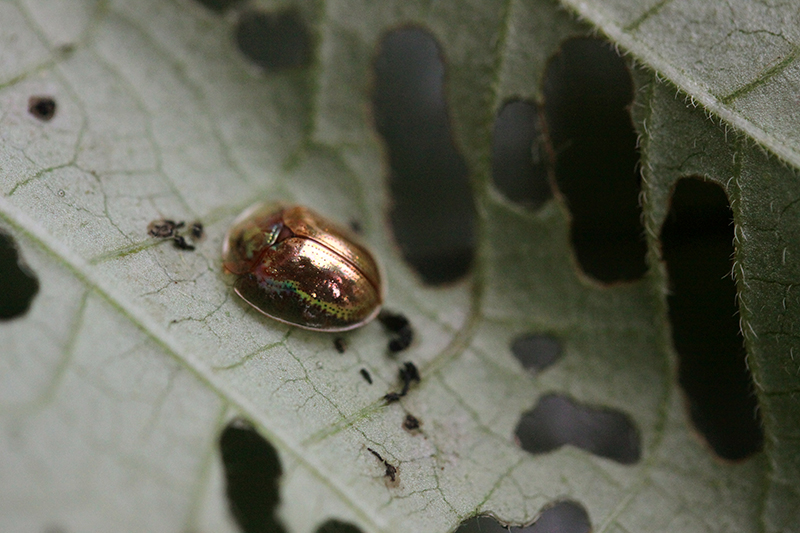
Meet the golden tortoise beetle. It’s about 6 mm long, and has the remarkable ability to change color from shiny gold to dull brown if threatened. I did my best prodding to try to get the one I found to change color, but instead of morphing it just took off and flew away. Apparently they are quite fond of morning glories, sweet potatoes, bindweed, and other plants in the Convolvulaceae family.
September 21st, 2013 §
During the last few weeks, the Glass Gem corn—my summer experiment—has begun to dry out and turn brown.
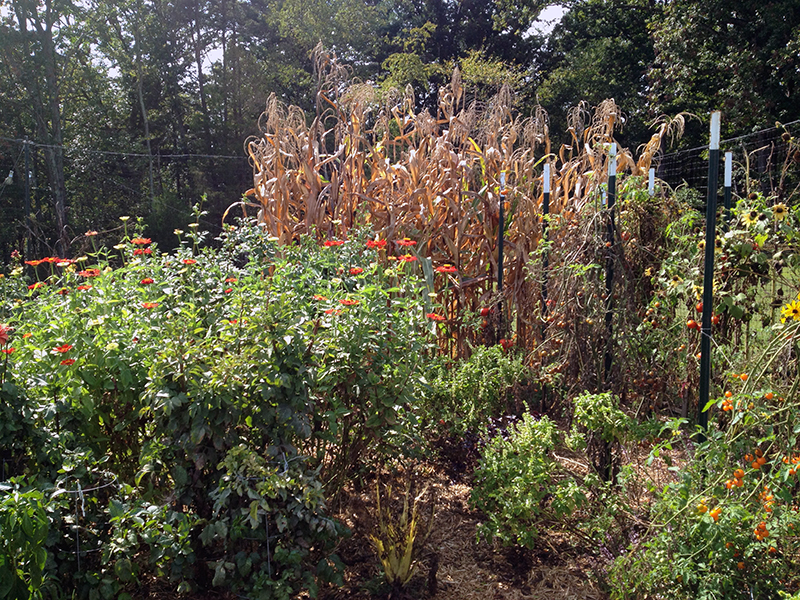
I picked a few test ears and determined that it was time to harvest. But first I needed to fight my way through a wildlife gauntlet to claim my jewel-toned treasure. First, a black widow protected the garden entry, tucked up inside her cinderblock lair.

Not only was she guarding the garden, she was also guarding a few egg sacks. Mother and young were slayed with scissors and wasp spray.
Then I re-engaged a known enemy. A couple of weeks ago, while harvesting my test ears, I was stung on the right wrist by a wasp. Turns out it was one of a gang that had built a little fortress hidden on the underside of one of the corn leaves.
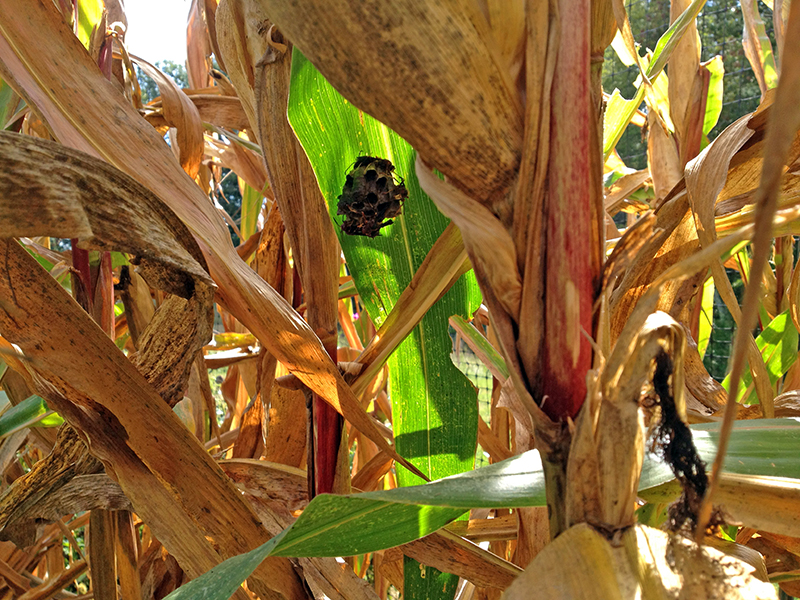
With throbbing wrist I had hastily retreated to ice packs and antihistamines, conceeding round one to the wasps. My entire arm ached for a week, feeling like it was broken deep inside.
But now I was back and better prepared. Before the wasps could mount a defense, I shot them all with a strong stream of wasp spray. They fell to the ground, writhing. A quick perimeter check found no more wasp nests, and the coast was clear for me to begin my plunder.
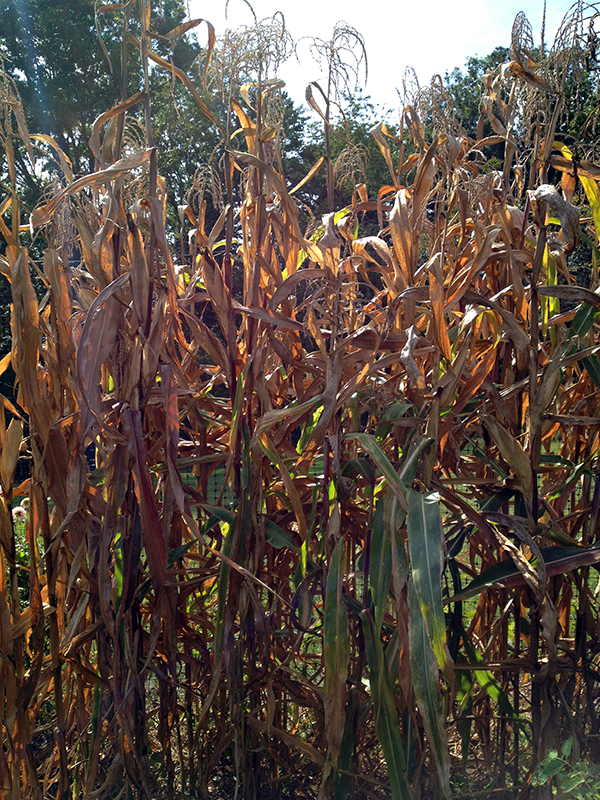
Harvesting corn is no fun. Between the fear of more hidden stinging creatures, and the claustrophobic feeling induced by threading myself amongst the close-spaced cornstalks, I wanted to get it over with as soon as possible. I wrenched the ears off the stalks, and cut the ones that didn’t come away easily with my pruners. I tossed them all in a pile to be sorted later.
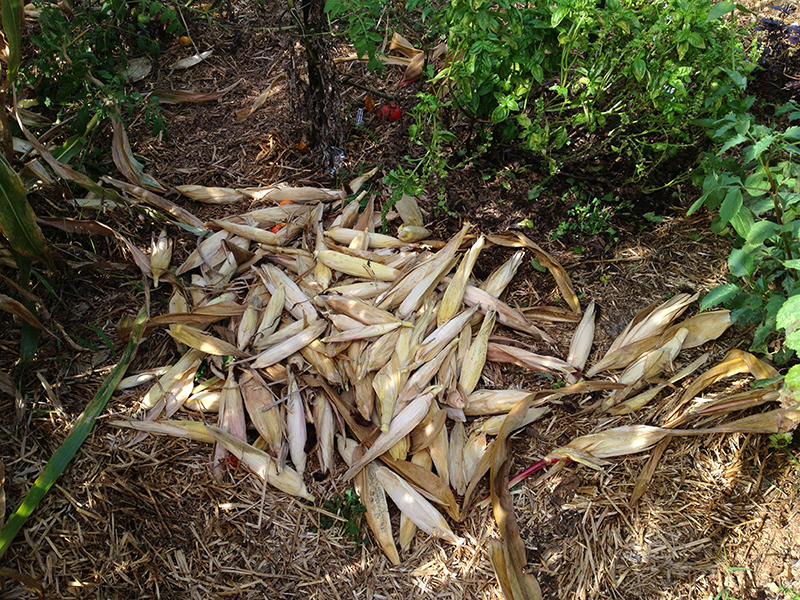
Just when I was about done and feeling like I was home free, I encountered my final challenger. I reached into the stand of cornstalks and as I did felt a burning, stinging sensation travel up my arm from wrist to elbow. I screamed and flipped over a leaf to see this guy, just before I ran to the outside hose to douse my arm in cold water.
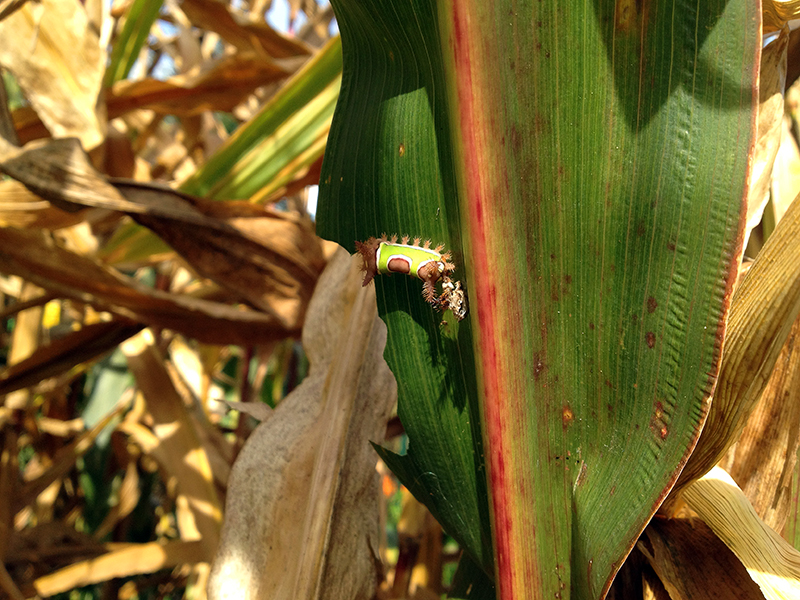
Meet my Cerberus, a saddleback caterpillar, its spiked protrusions covered with urticating hairs that had just set my arm on fire. A fitting final foe for what had been a hellish harvest.
But now came the fun part: opening each ear to see the multicolored surprises held within…
September 9th, 2013 §
High summer’s butterflies, of which there appeared to be more than normal this year, have been superseded by spiders. Spiders, and spiderwebs, everywhere. Their aerial architecture has stopped me short several times this past week, shaking my head in disbelief. Just yesterday I looked out my second-floor window and saw, at eye-level, a strand of web that ran from the silver maple in the front yard to the red maple at the corner of the house—a distance of more than 50 feet. It looked like an electrical wire strung across my front yard, glinting as it twisted in the sunrise. Baffling and amazing.

There’s a giant Argiope aurantia that’s taken up residence in the front garden, and she is doing her part cleaning up the last of the dying butterflies. Common names for this common spider are “black and yellow garden spider,” “yellow garden orb weaver,” and most interestingly to me, the “writing spider.”
According to this page from the University of Michigan, the purpose of the thicker, white, zig-zag portion of the web, called stabilimenta, is controversial:
At least 78 species of spiders add these structures to their webs, originally named “stabilimenta” because they were thought to provide structural stability. One study of Argiope spiders supports the idea that these bright white structures attract flying insects (Tso 1998). Contrary to this “prey attraction hypothesis,” hungry spiders build fewer or smaller stabilimenta, and webs with stabilimenta capture fewer prey (Blackledge 1998, Blackledge and Wenzel 1999). A competing hypothesis is that the highly visible threads prevent birds from flying through and destroying the webs.
I like that last theory the best.
When I was a kid and we found these spiders around the house, my dad used to catch bugs and toss them into the webs to feed these wild and temporary pets. It was country entertainment to watch the the spider jolt as something hit her snare, and then quick as an arrow she flew to the bug and wrapped it end over end in silk. Sometimes the bugs were too large to catch in the web, and they’d tear big gashes in the delicate structures that were always, magically, repaired by morning. Some bugs would feed the spider for days, until we’d come outside and the desiccated carcass of the unfortunate grasshopper or whatever would have been cut out of the web and left to drop on the deck. And then it was time for us to go hunting again.
September 5th, 2013 §
Well the day I was anticipating arrived. Free ranging chickens in fox country means accepting, and living with, the risk that they’ll not come home one night. I’m surprised it took this long, actually. Just yesterday I was saying I hadn’t seen a fox in so long…
All the chickens were out all day today, roaming around. I left for only a short while this afternoon to go to the grocery. The dog was in the house while I was gone. I got back and saw some chickens in the yard, and all six babies were fine by the bushes. I didn’t count the chickens because they often break up into little groups that hang out in different places.
Tonight I put the babies to bed in the garage, and then noticed that only a few of the big chickens were hanging around the coop. I didn’t think much of it, as I figured the others were elsewhere. But at dusk I went to close the coop and there were only five chickens in there: Calabrese the rooster, Cora, Oregano, and the two Black Copper Marans hens, one of which is Dahlia. It’s never a good sign when the chickens don’t come home to roost.
So I got a flashlight and poked around all their favorite hidey holes before steeling myself for a trip into the woods. I knew what I would find, in some state or another. The chickens had taken to raiding the compost pile, which is set just into the woods, which is technically fox territory. I tried to keep it hidden from the birds, but once they discovered the delicious worms and solider fly larvae and food scraps, it became a place they visited several times a day.
Along the path into the woods, right where the snake appeared Monday, I found my first clump of black feathers. Then many, many more all the way to the compost pile. So that’s either Lilac or Iris, or both. The two Lavender Orpingtons are missing as well, but I didn’t find any of their feathers yet. I called for them, hoping they’d be hiding or injured and I could get them home and patch them up. It was getting dark and I didn’t really feel like hunting for more feather piles after finding the first. I just can’t understand that if it was a fox, how did it get four birds at once? I don’t know if foxes hunt in packs—I didn’t think so but I could be wrong. I would have expected them to grab one bird while the others ran for cover. And were was my rooster in the fray? I have seen him run across the entire pasture in response to a hen squawk. Maybe he was too far away?
Like I said, I knew this was coming. It’s one of the reasons why I wanted to raise up some babies this summer, as replacements for the inevitable casualties. And part of me is glad to be rid of the Lavender Orpingtons, mean as it sounds. One didn’t lay reliably, and the other always lay on the floor of the coop (which meant the dog got those eggs) and both of these hens always looked dirty and scraggly (despite baths, the last of which I just gave two nights ago). So no big loss there. But my egg production machine took a big hit with this loss of 2-4 eggs a day. Now I have only the Black Copper Marans as steady layers, as Cora never lays and Oregano does only when the mood strikes her. And it will be next spring until the new hens start laying, provided they don’t get eaten too.
I am a bit sad about Lilac and Iris. They were my first hens and really steady layers of distinctive eggs. They always looked clean and healthy. At their last molt their facial feathers had grown in white, which gave them a cute elderly look. They were in their second year of lay, which means they weren’t spring chickens but they were keeping up with the younger birds. Iris raised a flock of guineas as her own. Lilac’s chick is one of the six babies. And they had good personalities, steady and friendly, and were always the first to come running for treats. They ate copious numbers of bugs and fertilized the gardens, all while getting to live in the fresh air and sun and do whatever they wanted during the day while being protected at night. They had a rooster who loved them. I guess they had pretty wonderful lives.
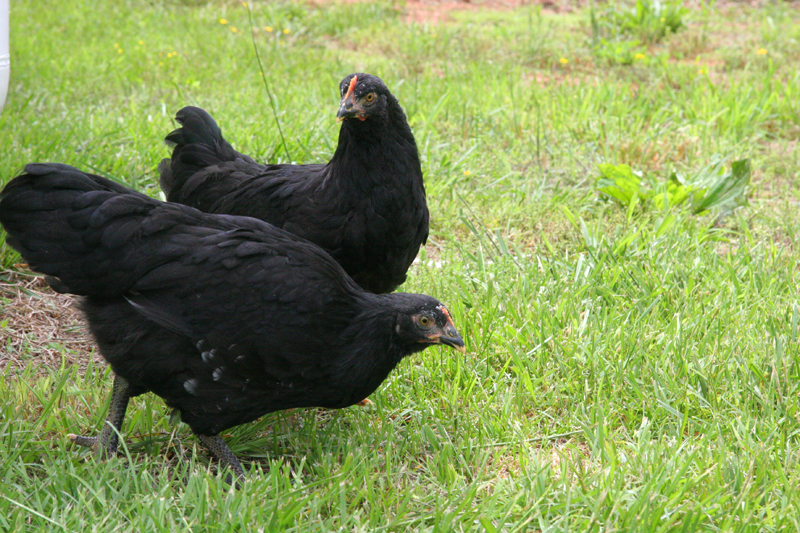
Here they are when I first got them. They were about the age of the baby chicks I have now. And here’s Lilac just two evenings ago, right up front, looking for handouts.
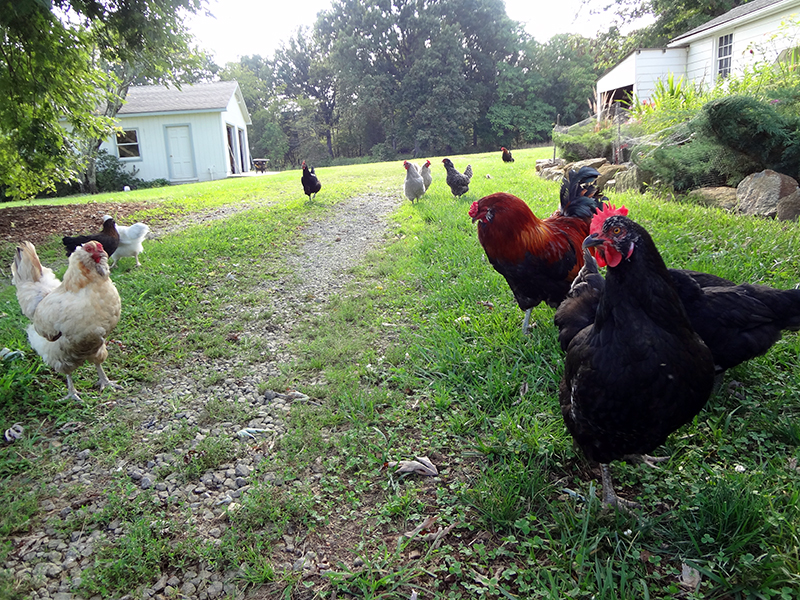
They were good chickens, but now they’re just stories and photos on the pages of this blog.
Goodbye, girls.
September 2nd, 2013 §
This morning, on the way to the compost pile, I came across this snake stretched across the path into the woods. By the time I ran for my camera it was fast disappearing into the poison ivy.
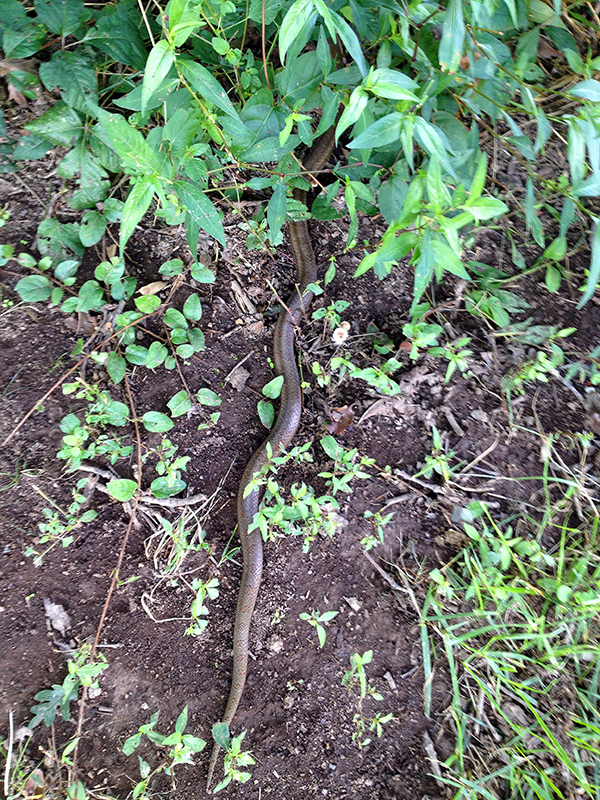
At first glance I suspected a copperhead, based upon the coloration, but a quick look at its head told me it was no viper.
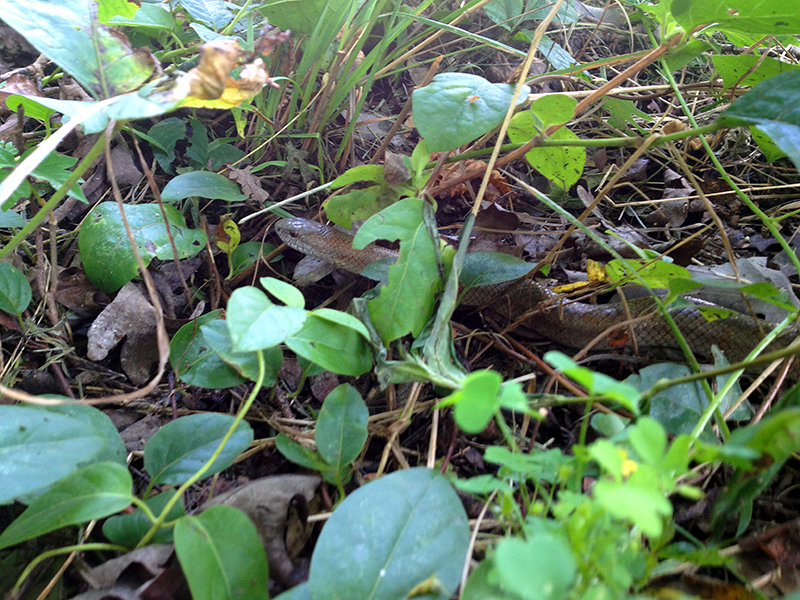
Had to go to my snake book for an i.d. I think it’s a mole kingsnake. I’ve never identified this particular snake around here, so it’s one for the life list. Apparently they live mostly underground and are often unearthed by farmers’ plows. They are superb burrowers, which fit this snake’s habit as it disappeared into the duff within seconds of taking its photo.
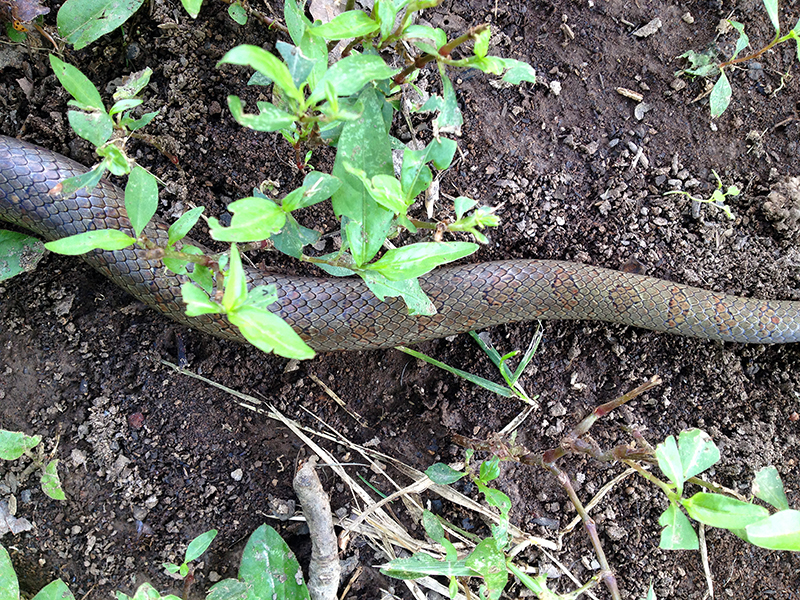
Happy birthday to me.






























